Robert S. Rosenfeld DDS
Not so many years ago, the materials and techniques available for restoring posterior teeth were limited. Gold foil was a slow and costly choice, not affordable by all patients. Cast gold was appropriate for larger restorations, but costly and required multiple visits. For routine restorations, amalgam was the material of choice and served our profession well for nearly a century. The introduction of tooth- colored composite resin material changed the playing field. The earliest materials were intended for use only on anterior teeth, but dentists wished for similar materials that could withstand posterior chewing forces, and patients began to demand more aesthetic restorations.
The evolution of materials (both fillings and bonding agents) and techniques for aesthetic direct posterior restorations has been decades long and sometimes painful (literally). Composite resin has become the material of choice but many practitioners still struggle with issues ranging from difficulties with handling of the materials, uncertainties with bonding them (marginal leakage and “white lines” at cavo surface margins) and the dreaded post-op sensitivity. The following case, however, will summarize a simple protocol for predictable successful outcomes:
The patient presented with occlusal caries on tooth #31. After anesthesia and rubber dam isolation, the tooth was prepared, including a cavo-surface bevel (to improve adhesion at this critical interface) (Fig. 1). Many choices of adhesive exist. I favor the self-etch adhesives because they achieve very high bond strengths to dentin and reduce the likelihood of post-op sensitivity. If any shortcoming exists for self-etch adhesives, it would be a chance of reduced bond strengths to enamel. Preferring a belt-and-suspenders approach, I employ the “Selective Etch” technique. The application of phosphoric acid to only the enamel margins ensures that excellent bond strengths to both dentin and enamel are achieved (thus virtually eliminating leaking margins and white lines as well as complaints of sensitivity) (Fig. 2). In this case, Tokuyama Dental’s One- Up® Bond F Plus adhesive was used. It is a single step, self-etch adhesive that features color-change technology. One drop of each of its two components was mixed, yielding a pink colored liquid, which is then burnished into all surfaces of the prep for at least 10 seconds (a second application may even improve results). Light curing will yield a color change of the bonding agent from pink to pale brown, which signals that you are ready to add your restorative material.
I began my buildup with Tokuyama Dental’s Estelite® Bulk Fill Flow, shade A3 (Fig. 3). As the name implies, this material can be used in increments as deep as 4mm, with minimal shrinkage stress for easy and worry-free restorations. I particularly like that it flows beautifully onto all prep surfaces, eliminating voids, but is strong enough to fill an entire prep. While the material requires no capping layer, in this case I layered it with Tokuyama Dental’s Estelite Sigma Quick®, a supra-nano filled universal composite resin, shade CE (clear enamel) (Fig. 4). It is available in 20 shades and has a chameleon-like ability to match its surroundings. Its spherical fillers allow for excellent handling characteristics as well as high wear resistance and outstanding polishability. An innovative photo-initiator allows for rapid curing (10 seconds with a standard halogen light). I crudely created occlusal anatomy (Fig. 5) which was refined after removal of the rubber dam. Polishing with a silicone point (Enhance, Dentsply Sirona) and polishing brush (Groovy Diamonds, Clinician’s Choice) yielded the final result (Fig. 6).
I talk with many restorative dentists who use composite resin for posterior restorations but still are not comfortable with the materials or adhesives they are using. They are not always pleased with their results, or are dogged by complaints of post-operative sensitivity. With careful technique and excellent materials, such as those shown by Tokuyama Dental, it has become much easier to obtain predictable satisfactory results.
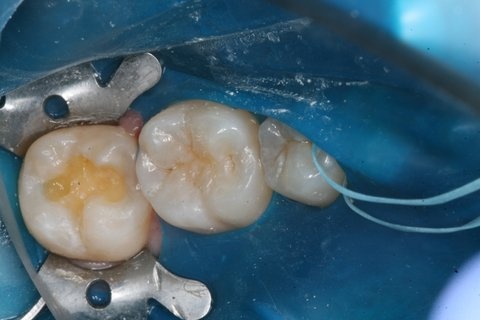
Figure 1
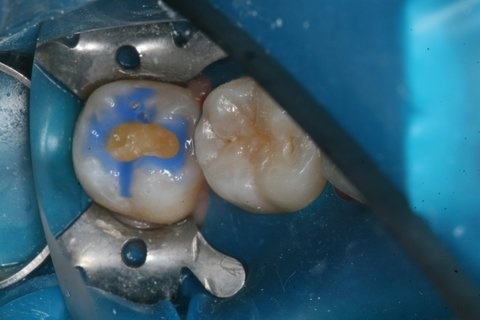
Figure 2
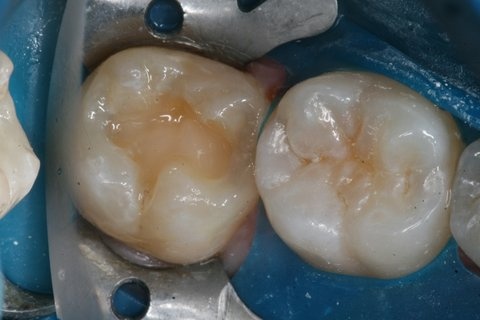
Figure 3
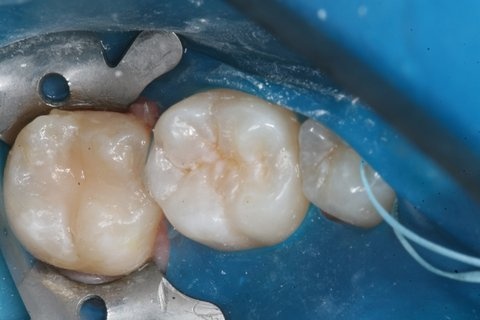
Figure 4
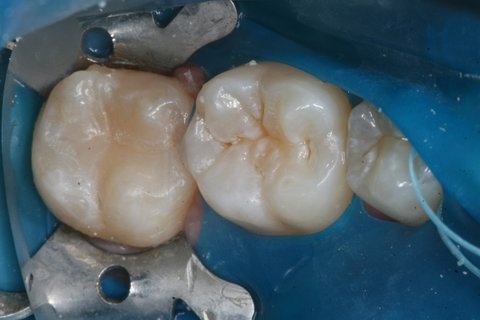
Figure 5
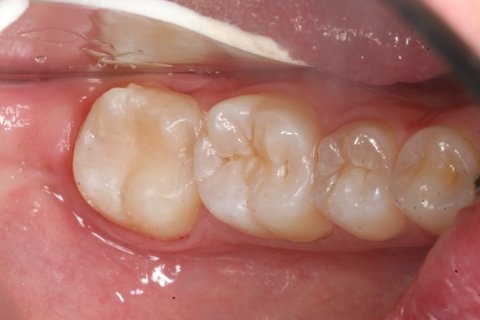
Figure 6

